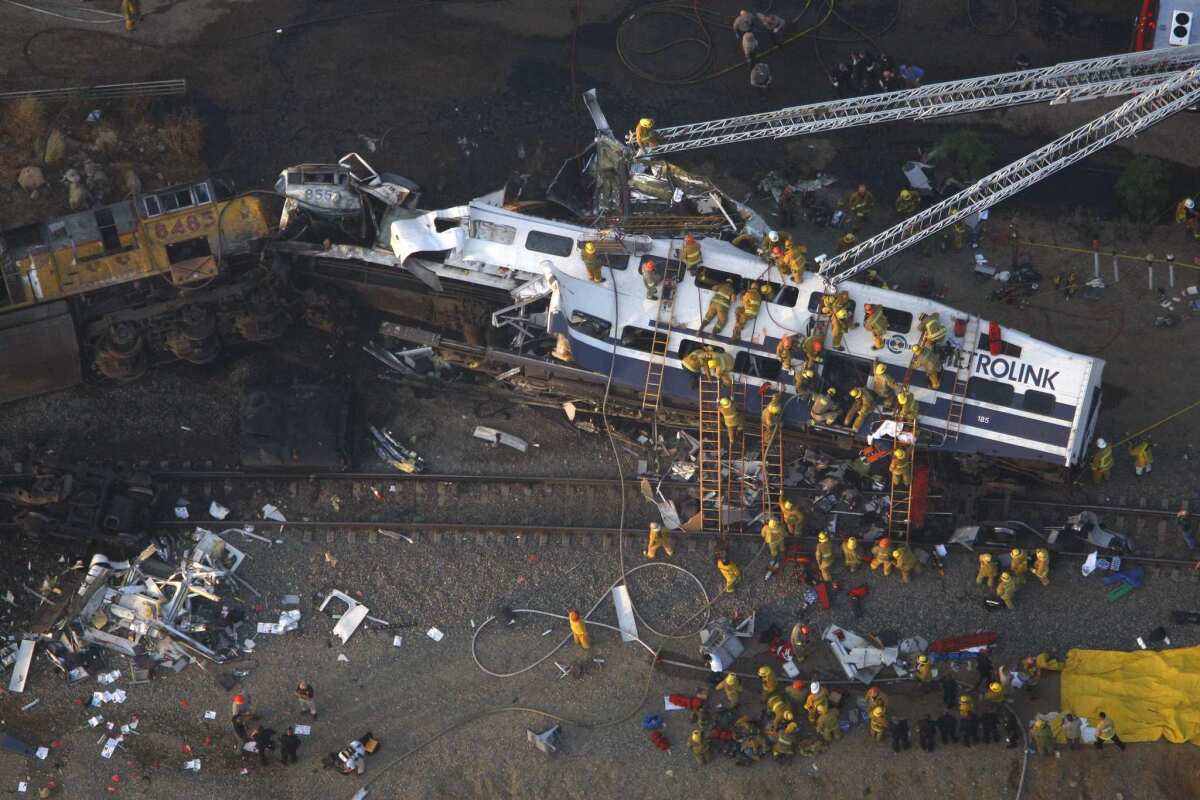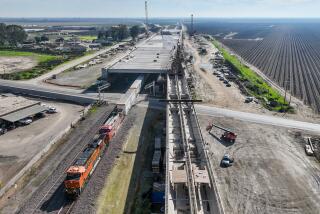Rail industry seeks delay for automated safety system

- Share via
WASHINGTON -- The railroad industry pressed lawmakers Thursday to extend a deadline for installing safety measures that were proposed after a 2008 collision involving a Los Angeles commuter train killed 25 people and injured more than 130 others.
The new safety system would automatically slow down or stop trains if engineers exceed speed limits or are on a collision course with another train.
“We will not meet the 2015 deadline of having all 60,000 miles installed and operational,” Edward Hamberger, president and chief executive of the Assn. of American Railroads, told a Senate committee, citing the cost and complexity of implementing the system nationwide.
Bipartisan legislation to extend the deadline to 2020 is pending in the Senate Commerce, Science and Transportation Committee. It faces uncertain prospects.
Christopher A. Hart, vice chairman of the National Transportation Safety Board, told lawmakers that the agency’s files were “filled with accidents that could have been prevented” by the high-tech system known as positive train control, or PTC.
“With each PTC-preventable accident, the case for PTC only grows stronger, yet progress toward industry-wide implementation has been slow,” he said in written testimony.
Congress set the Dec. 31, 2015, deadline after a Los Angeles Metrolink train collided head-on with a Union Pacific freight train near Chatsworth in September 2008.
Metrolink recently became the first commuter rail line in the nation to roll out the high-tech system on three of its routes The line plans to gradually install the system on the rest of its network by the end of this year.
To address complaints about the cost of installing the system, President Obama this week included in his proposed budget $825 million to help commuter railroads put the safety measure in place. But the funding proposal could run into trouble from congressional Republicans intent on reducing federal spending.
Sen. John Thune (R-S.D.), the bill’s chief sponsor, told colleagues that the 2015 deadline was “unrealistic.”
Hamberger cited the complexity of the work, including installing 22,000 antennas along tracks nationwide to transmit signals for trains to automatically slow down or stop if engineers miss signals, exceed speed limits or are on a collision course.
“It’s critical that we get it right,” Federal Railroad Administrator Joseph Szabo said.
Citing industry difficulty in securing federal approval to install the antennas, Sen. Roy Blunt (R-Mo.) said it was “ludicrous” that the government “can drag its feet as long as it has and then suddenly in the middle of the year before this has to be completed ... can assert that there’s plenty of time for the railroads to comply.”
The hearing was spurred by a spate of high-profile train crashes, including a Metro-North commuter train derailing in the Bronx in December after entering a curve at 82 mph when the speed limit was 30 mph. That crash killed four and injured scores of others. In December an oil train struck another train in North Dakota, setting off a fire that burned for more than 24 hours and forcing the evacuation of 1,400 people.
ALSO:
Brig. Gen. Sinclair pleads guilty to inappropriate relationships
Massachusetts high court: ‘Upskirting’ photos on Boston trolley legal
Exonerated death row inmate takes on his former prosecutor in Texas
Twitter: @richardsimon11
More to Read
Sign up for Essential California
The most important California stories and recommendations in your inbox every morning.
You may occasionally receive promotional content from the Los Angeles Times.














